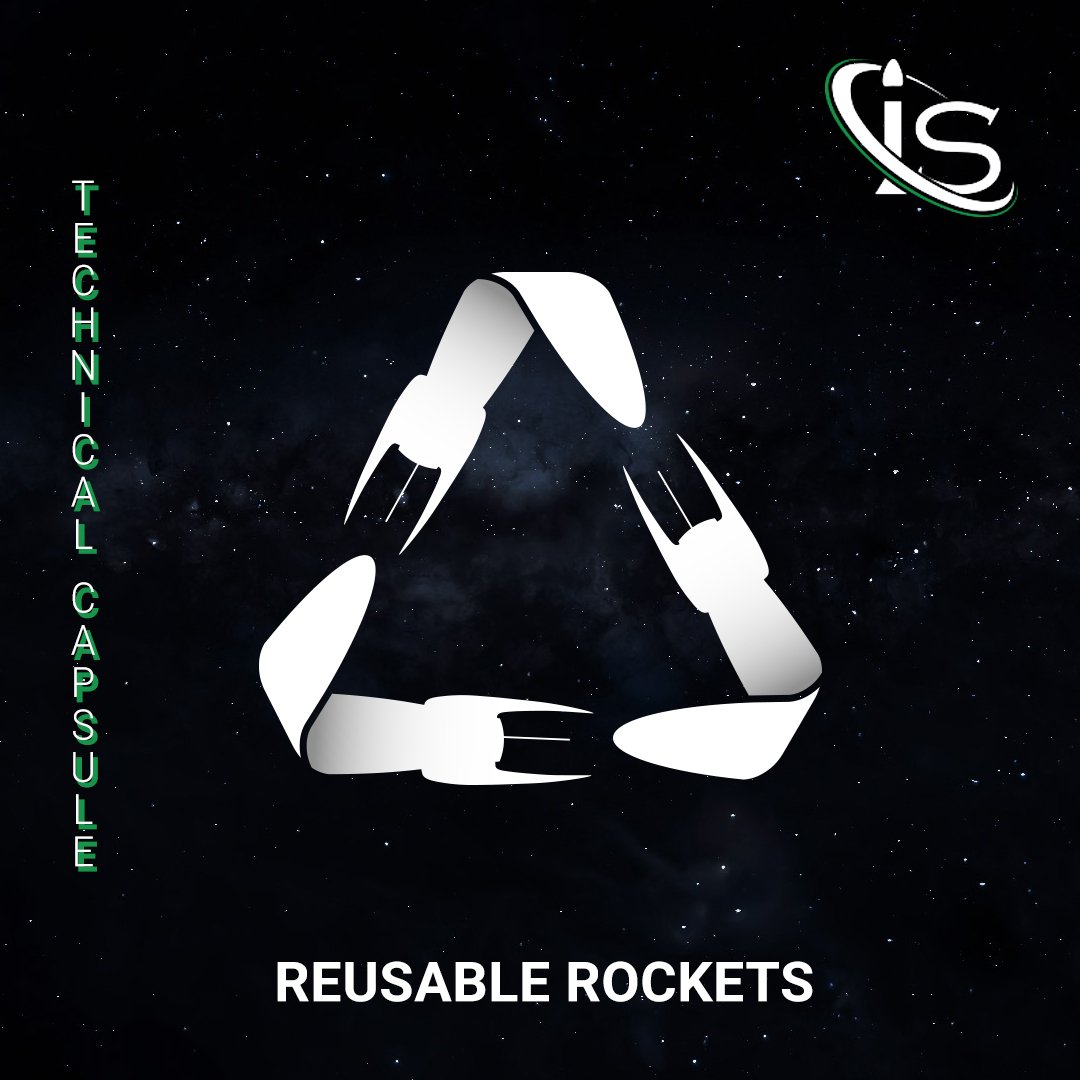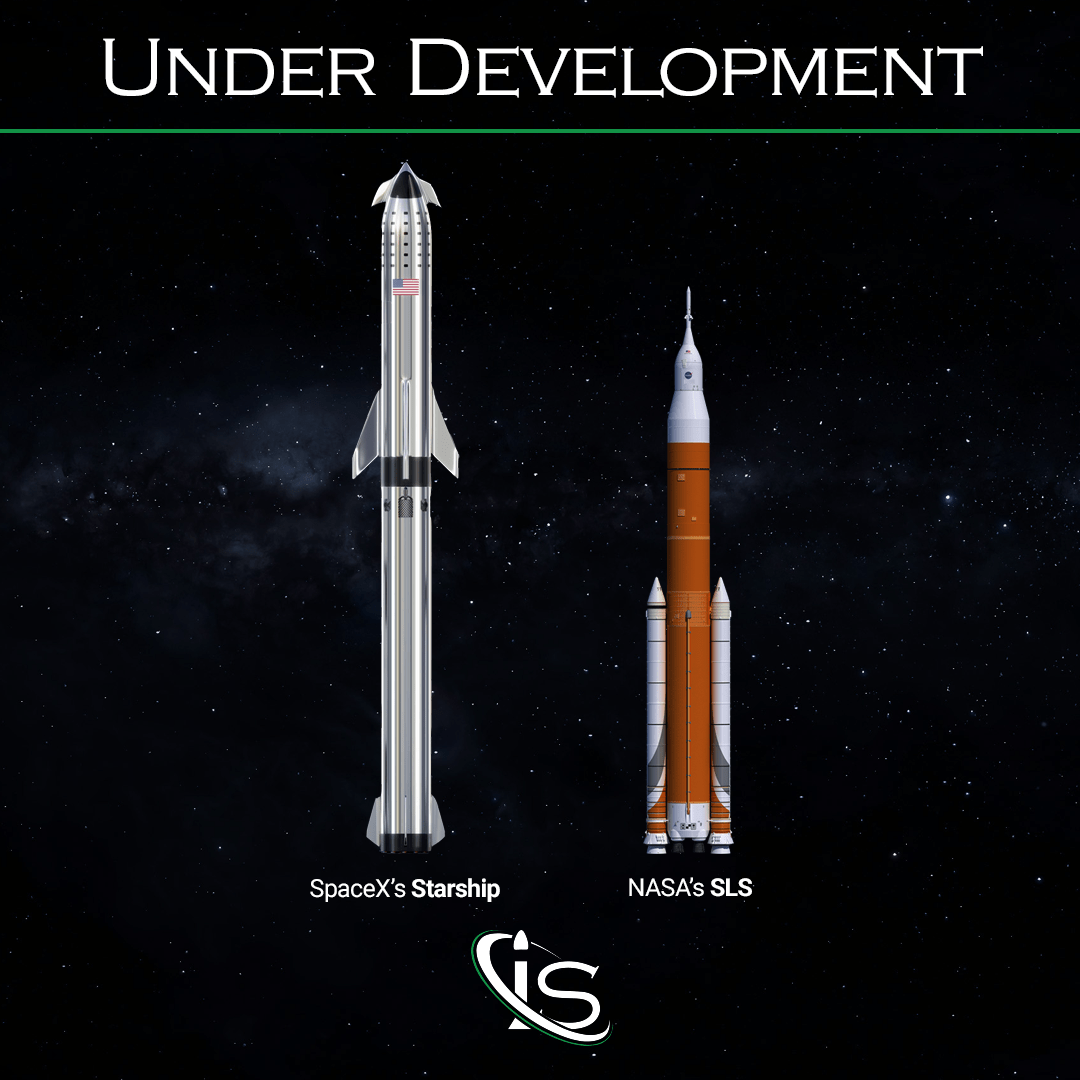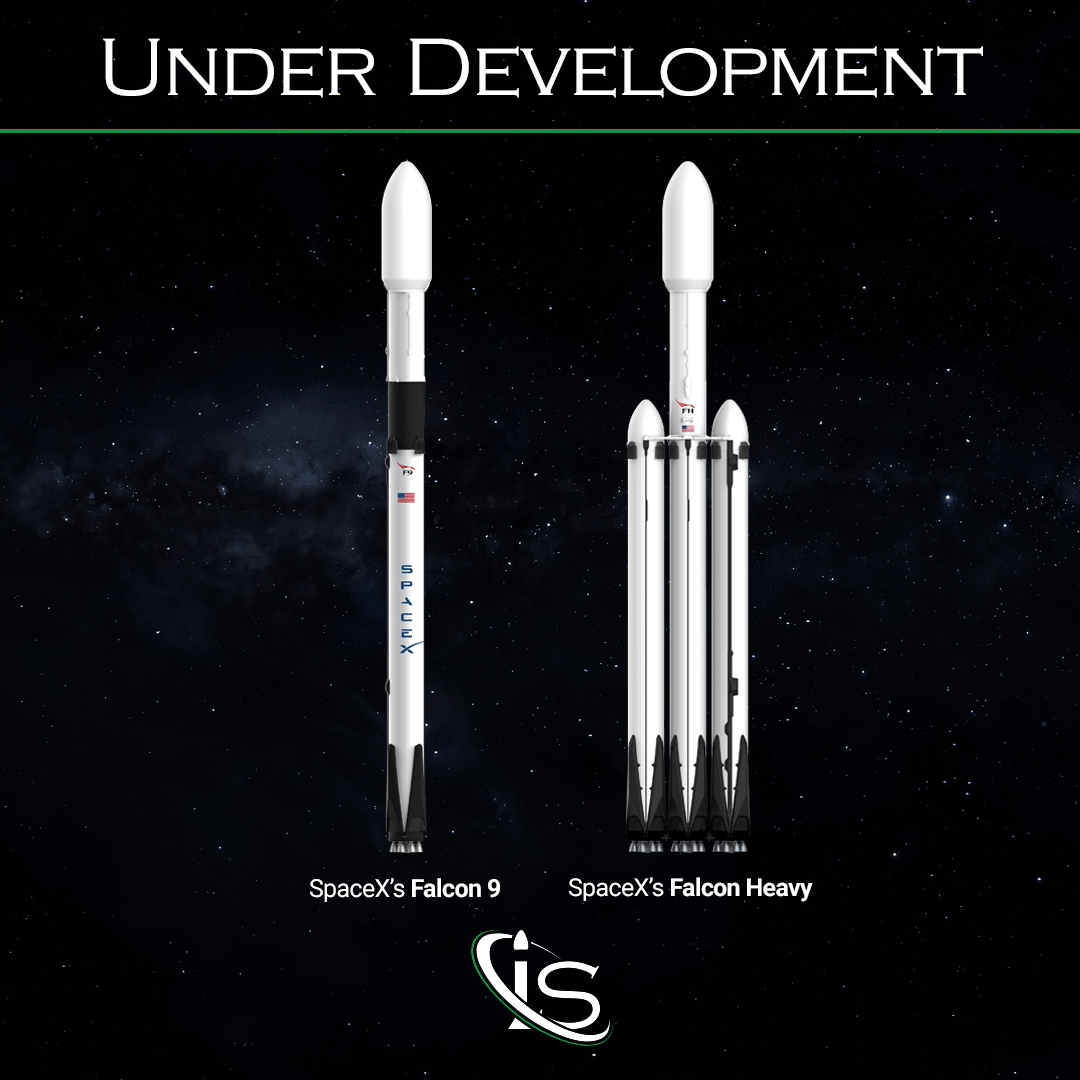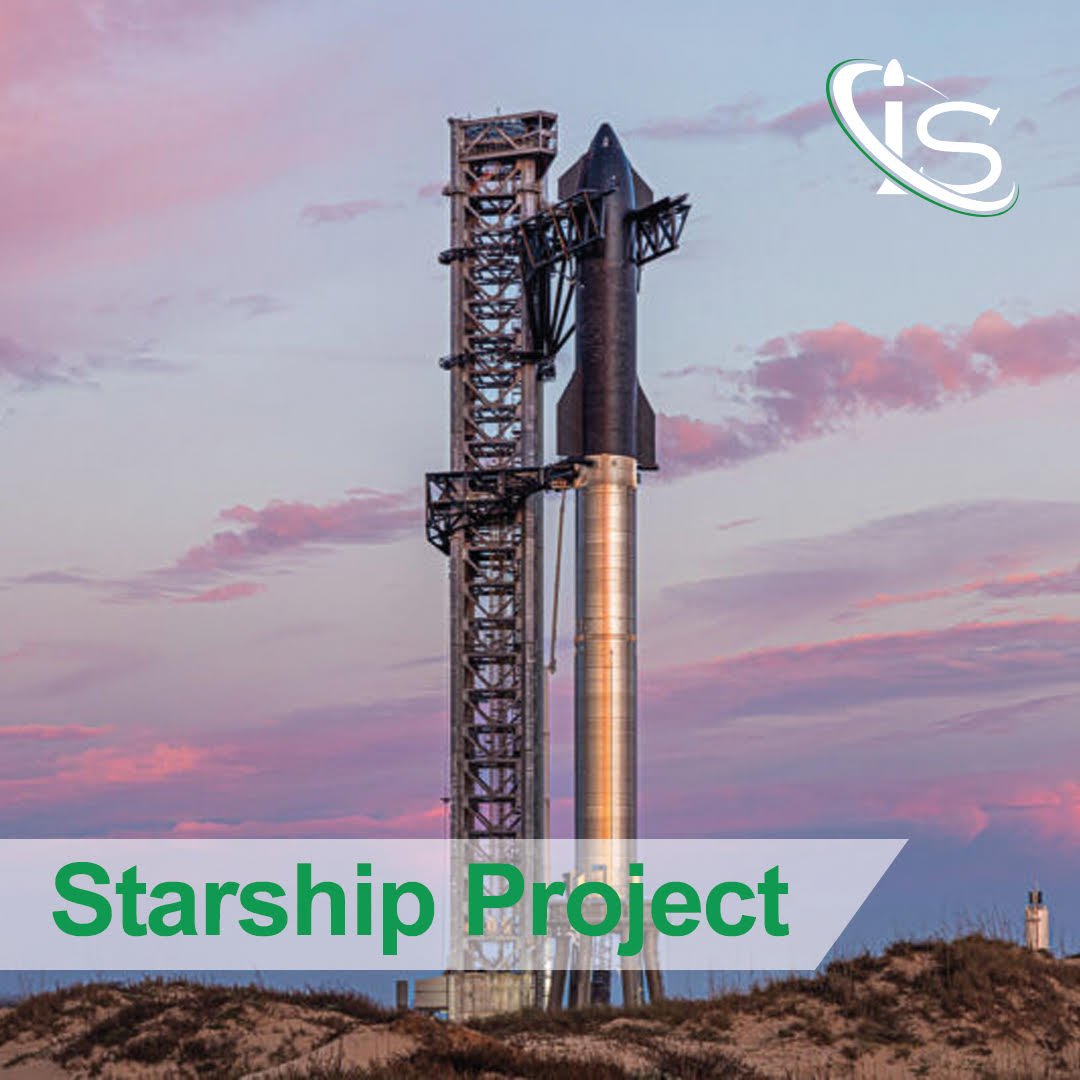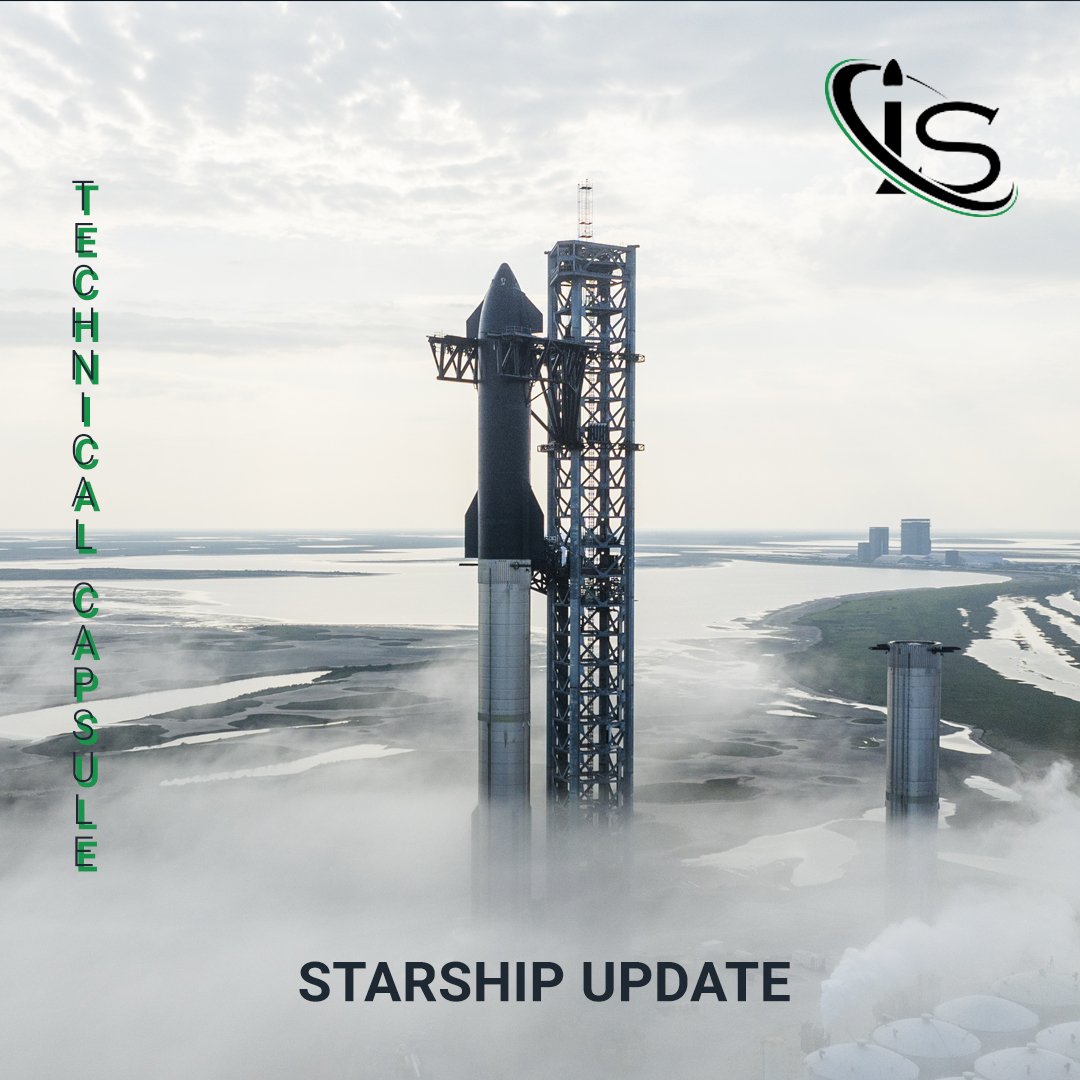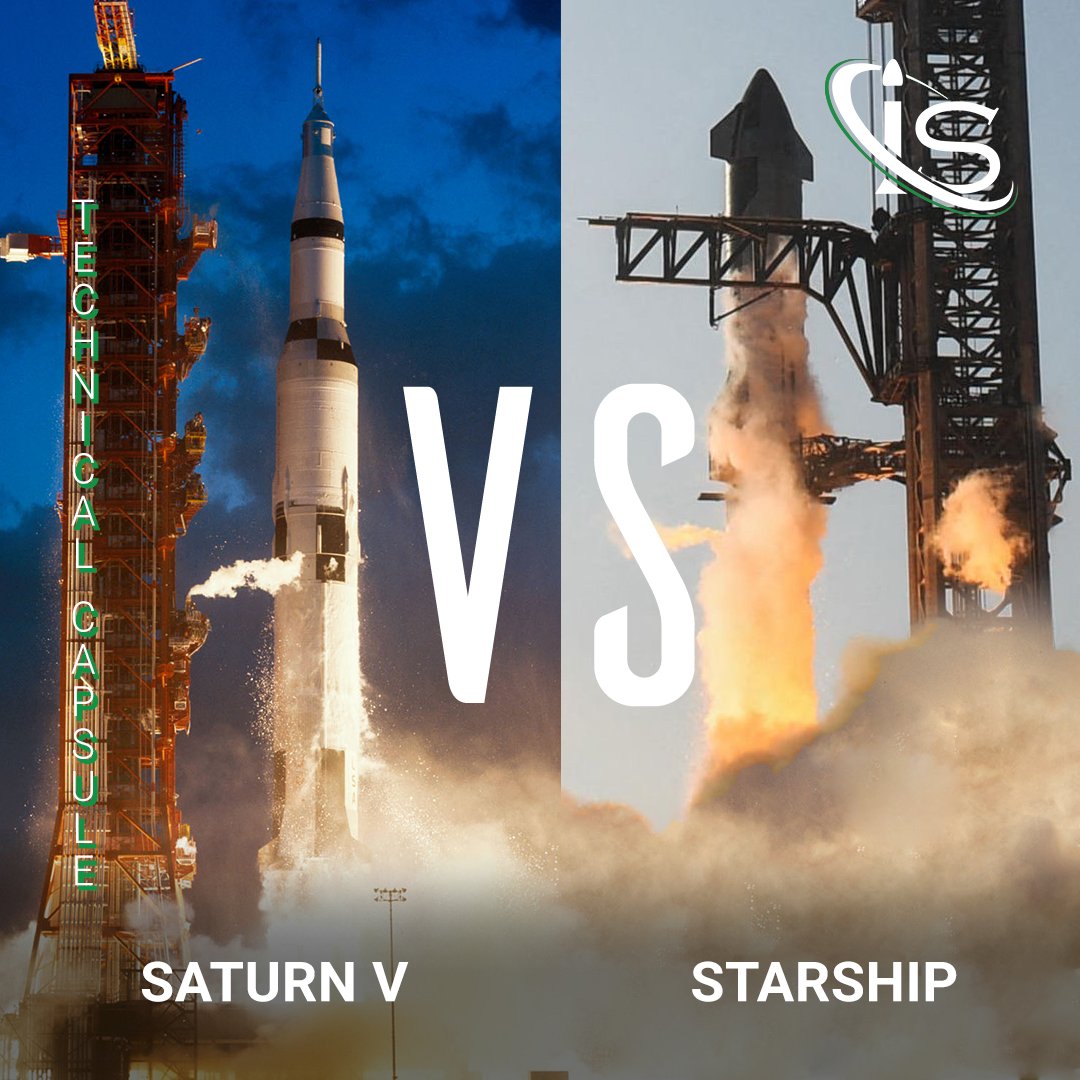Here we are with a new “episode” of the “SpaceX Saga”! In the last episode we compared “Falcon 9 vs Falcon Heavy“, two rockets that are so similar, we identified them as siblings. In this episode, we tackle the comparison of Falcon Heavy vs Starship. As visible in the graphic below, this one will be full of differences. However, our mission will be to find similarities even between these two very different rockets. Let’s start with a little introduction to the protagonists!
Falcon Heavy vs Starship: Two Different SpaceX Projects
Falcon Heavy is an extension of the Falcon 9 project. As the name suggests, it is the heaviest version of Falcon 9: same engines, same stages, but different thrust! This difference is due to the presence of two strap-on boosters; each of them has the same number of engines as the first stage, but even more than that, the side boosters are two exact replicas of Falcon 9’s first stage. This increased thrust enables it to have the heaviest payload capability among active commercial rockets – the only one heavier is NASA’s SLS rocket.
The huge capability of Falcon Heavy is usually used to carry military or government payloads both to LEO and GTO. One such example is its last launch, on June 25th, 2024, which had on board GOES-U, a NOAA — a.k.a. National Oceanic and Atmospheric Administration — mission.
The following is just a very brief overview of the challenging project that is Starship. In our blog, you can find dozens of articles about Starship in detail, from the project, itself, to the four test flights that occurred in the past two years. But what do you have to know to understand this comparison? Well, in essence, this. The most important part of the project is the development of a rocket capable of bringing not only a man to Mars but also all the materials needed for the construction of a self-sustaining city! For this goal, the rocket designed must not only be very large and highly capable, but also reusable. The reusability is one of the cornerstones of SpaceX’s development.
Rocket Differences
The first difference is the massive difference in the height of the rockets: Falcon Heavy is about 70 m, while Starship is 120 m. The booster of Starship, the Super Heavy, is as tall as all of Falcon Heavy! This difference is reflected even in the maximum diameter and total mass.
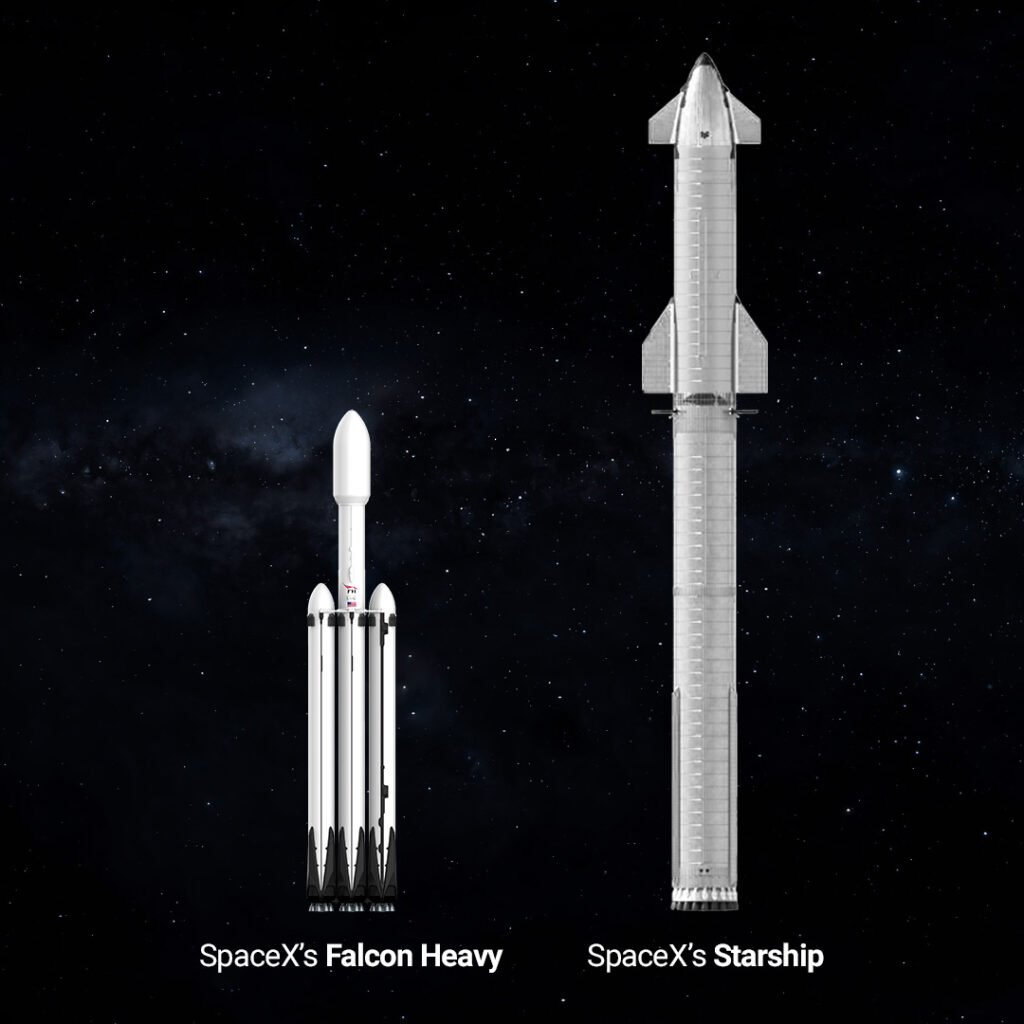
| Falcon Heavy | Starship | |
| Height | 70 m | 120 m |
| First Stage Height | ≈ 40 m | 70 m |
| Diameter of Central Core | 3.66 m | 9 m |
| Mass | 1 420 tons | 5 000 tons |
These are the Starship dimensions that we have grown accustomed to over its last 4 flights. However, things seem to be on the verge of changing. The latest information released by SpaceX point to a rocket with greater dimensions, more power, more fuel, and, consequently, a higher launch capacity.
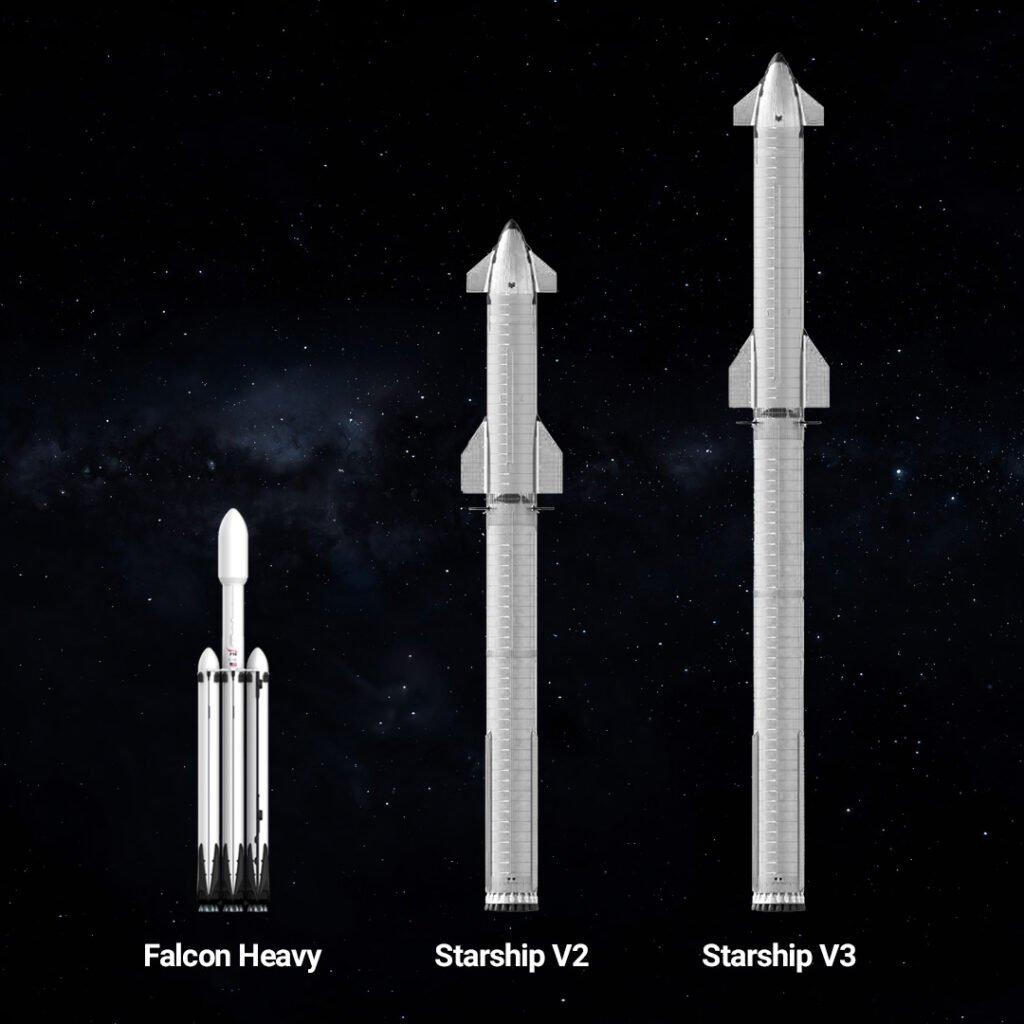
Even the number of projected annual launches is scheduled to change from 5 to 25. If you’d like an article on this new update, don’t hesitate to let us know in our Chatbox. In the meantime, let’s examine the same table as before but with the new numbers.
| | Falcon Heavy | Starship | New Starship |
| Height | 70 m | 120 m | 150 m |
| First Stage Height | ≈ 40 m | 70 m | 80 m |
| Diameter of Central Core | 3.66 m | 9 m | |
| Mass | 1 420 tons | 5 000 tons |
This is quite the impressive improvement, but let’s see how the engines and capabilities differ from each other.
Engines Comparison
The Falcon family uses the Merlin 1D engine; these use RP-1 and LOX to produce a thrust of 854 kN at sea-level. The first stage and each booster has 9 engines, for a total thrust of 22.8 MN at liftoff for Falcon Heavy.
For Starship, on the other hand, SpaceX has developed a brand new engine. This is called Raptor, and it is a masterpiece of engineering! The version used is the Raptor 2, a more powerful, lighter, and more robust version. Each Raptor uses CH4 and LOX to produce 2.3 MN of thrust. That is almost three times more than Falcon Heavy, as Super Heavy has 33 engines, with a total thrust of 72 MN!
And again, the Raptor 2 is the engine that propelled the first four Starship Test Flights. But something is changing, and its name is Raptor 3.
| Falcon Heavy | Starship | Starship | |
| Engine Name | Merlin 1D | Raptor 2 | Raptor 3 |
| Maximum Thrust (sea-level) | 854 kN | 2.3 MN | 2.75 MN |
| Fuel/Oxidizer | RP-1/LOX | CH4/LOX | CH4/LOX |
| First Stage’s Engine Number | 27 | 33 | 35* |
| Maximum Thrust at sea level | 22.8 MN | 72 MN | 103 MN |
Merlin 1D vs Raptor 2 vs Raptor 3: Engines
But what about the second stage? This stage has the same engines as the first one: Falcon Heavy has a single Merlin 1D Vacuum, while Starship has 3 Raptor engines and 3 Raptor Vacuum engines.
Fun fact: Starship – we are speaking of the ship alone – is expected to have a Maximum lift-off thrust of approximately 28 MN! That’s more than the whole of Falcon Heavy.
Payload Capability Comparison
Finally, another important difference already mentioned in the previous section is payload capability. Despite what we said regarding Falcon Heavy being the rocket with the heaviest payload capability among the active ones, the capability of Starship outshines it. Starship wants to add to the Space Races the heaviest payload capability of all time! The only confirmed payload capability for Starship is the capability to a 500 km, 98.9° LEO, and it comes in at 100 tons. Don’t worry, though, we are still looking for the missing values in the table below. So stay tuned to discover them.
| Capability | Falcon Heavy | Starship V2 | Starship V3 |
| to LEO, 28.5° | 63.8 tons | 250 tons (expendable) 150 tons (reusable) | 200+ tons (reusable) |
| to GTO | 26.7 tons | ||
| to Mars Transfer Orbit | 16.8 tons | ||
| to Pluto | 3.5 tons |
Rocket Similarities
In the differences, we did not speak about the number of stages; that is because both Starship and Falcon Heavy have two stages, albeit with some differences. To start off, the first stage of Falcon Heavy is powered by two boosters, meaning the first stage and the booster have parallel staging (you can check the difference between Serial Staging and Parallel Staging here). On the other hand, the second stage of Starship is a giant ship with controls and the capability to come back to Earth.
Reusability is a partial similarity between Falcon Heavy and Starship. More specifically, Falcon Heavy is only partially reusable; the reusable parts are the boosters, the first stage, and the fairing halves. This is a big amount of material coming back to Earth, which is why I decided to insert reusability as a similarity. Starship, instead, is designed to be fully reusable; both the booster and the ship will come back to Earth.
Launch Site
We are a few test flights away from Starship’s first launch from the famous Cape Canaveral. This will be together with Boca Chica, the preferred launch site for the Starship project. The tower that will support its launch is currently under construction. Falcon Heavy, on the other hand, is launching uniquely from Cape Canaveral. The last launch, in particular, was from Launch Pad LC-39A, close to where SpaceX is building the Starship tower.
But don’t forget about the Starbase project! Click here to learn more about it.
When Will the Next Launch Be?
After reaching double digits on June 25th, 2024, the next launch, which will open Falcon Heavy’s second decade, is scheduled for October 2024, with Europa Clipper on board. Unlike what the name may suggest, this is a NASA mission, with the objective of researching and patrolling Jupiter’s Moon, Europa — which gave the mission its name. Click here to stay updated on Falcon Heavy’s schedule.
After seeing Starship take to the skies last time, on June 6th, on a launch that marked many milestones, we are all awaiting with bated breath the next test flight, currently scheduled for this September. Just a few short weeks before we see this engineering behemoths fly again. Click here to stay updated on Starship’s schedule.
And this is where the comparisons end. If you have any questions or want to deepen some aspect, you need only open the Chatbox and ask. See you all next time!
